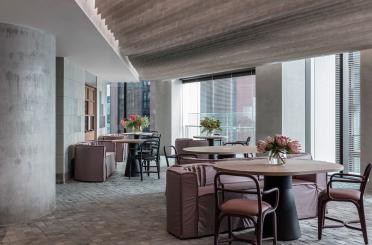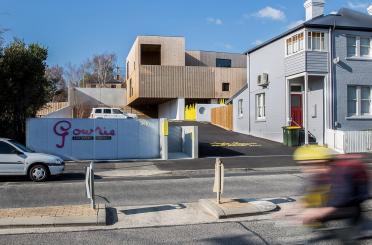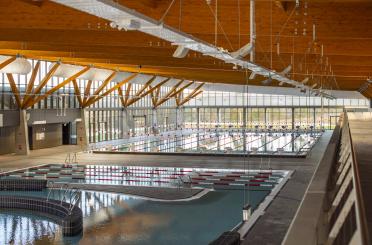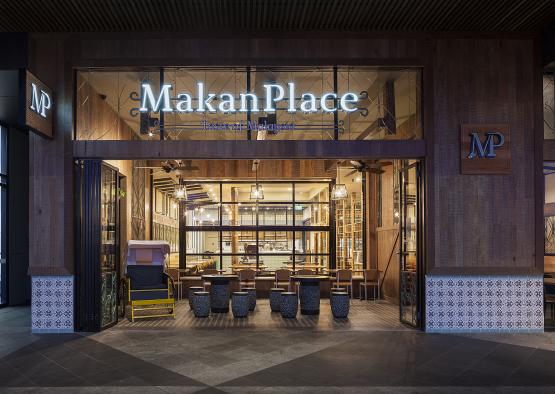
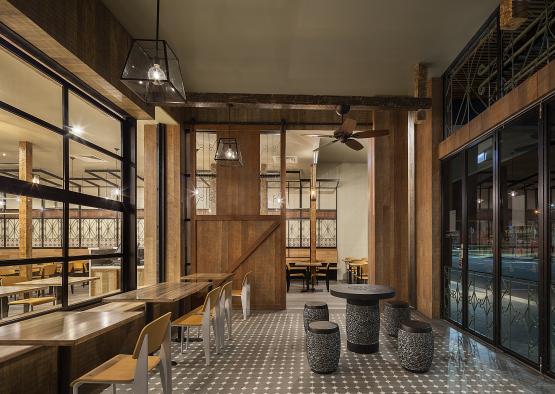
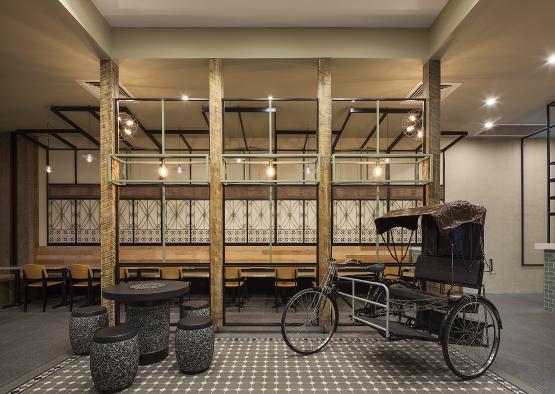
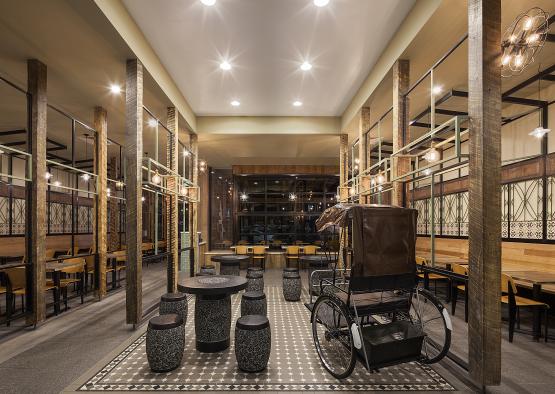
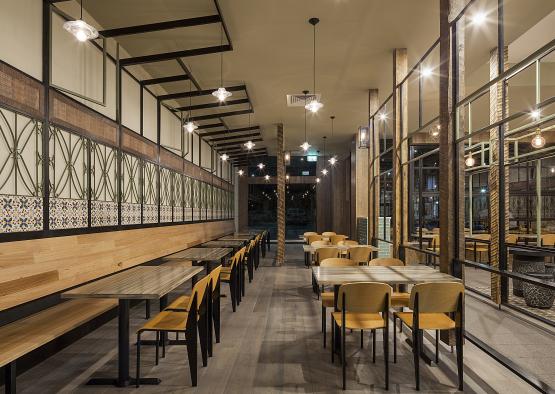
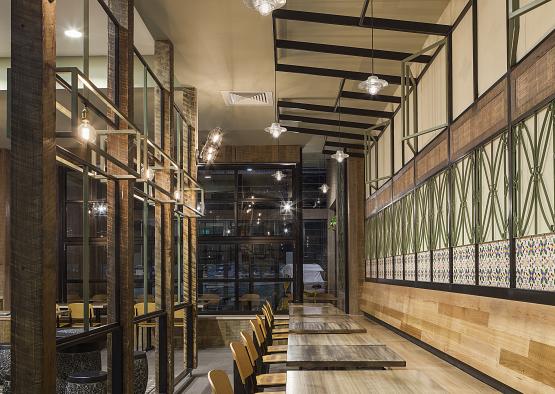
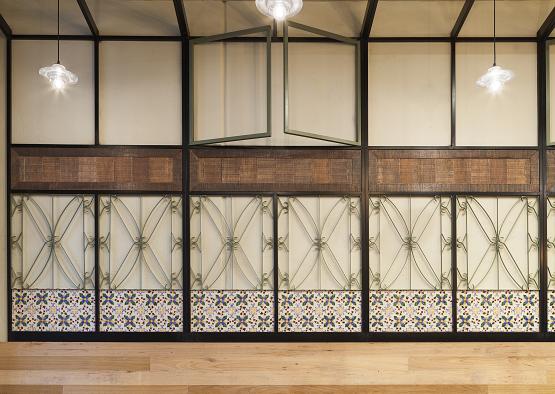
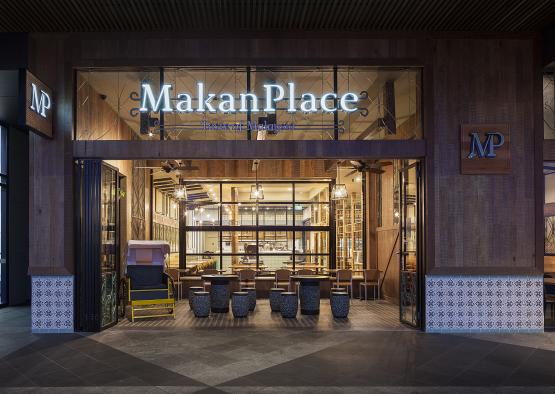
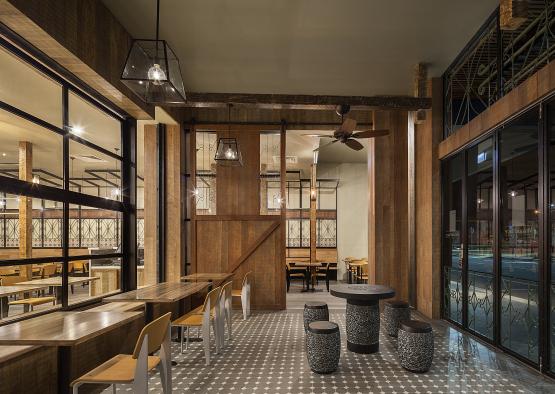
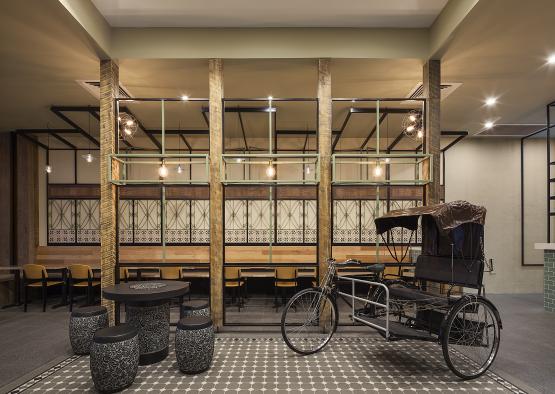
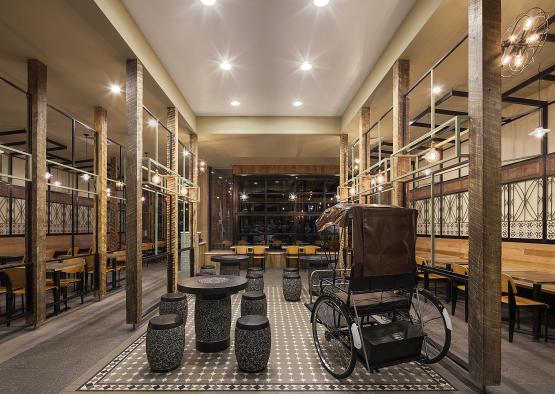
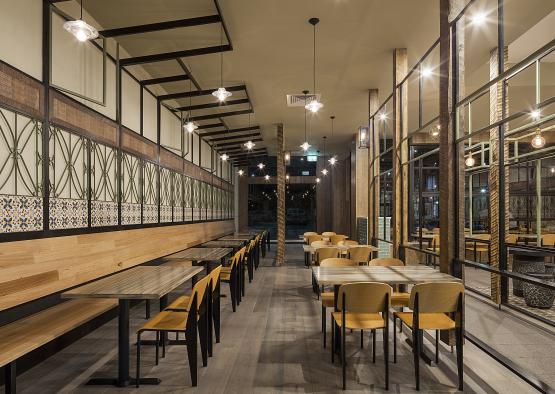
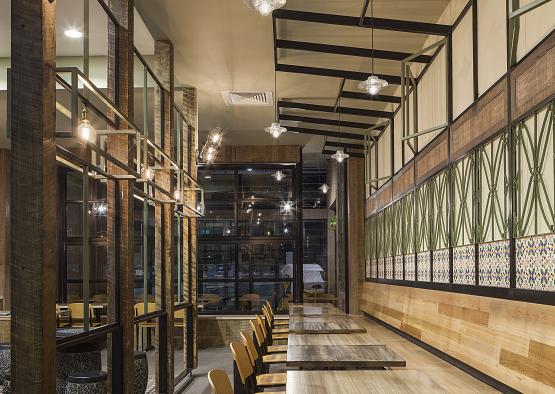
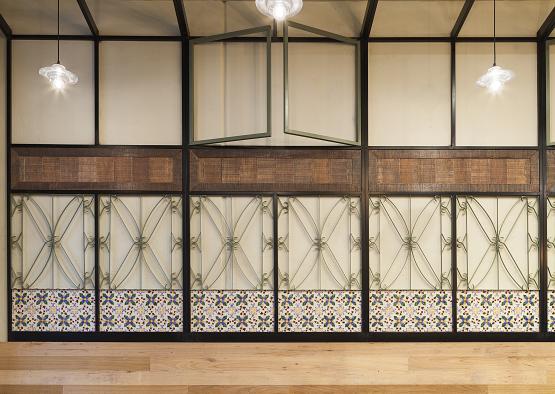
Overview
The Australian Timber Design Awards have named PNEU Architects the 2016 winner of the Peoples’ Choice Award for Excellence in Timber Design for their project Makan Place.
The Makan Place restaurant interior design showcases how a traditional Malacca building typology can be infused with a modern Australian hospitality mantra of cordiality and hygiene.
The recycled timber used in this project showcases how weathered and repurposed timber can impart a sense of character into the design. The irregular tonal variation caused by a random mixture of species works in favor of the façade design. The various treatment methods deployed on the same timber materials also displays the potential of timber as a material to be manipulated to suit the context; the grinding and smoking of the timber created crack lines and exposed the timber grain, which assigned the chronological significance of the timber to the ambiance of the space.
Structure
Through the extensive deployment of recycled smoked timber as a visual indicator, the space is sub-divided into a vestibule, a courtyard and the main dining area sequentially. The vestibule signifies the old Malaccan sheltered walkway while introducing a warm ambience accentuated by the smoked Iron Bark wall cladding. The hardwood radiates a dark red to greenish hue which is the characteristic of the robust timber. Hairline-joints were incorporated with large areas of glazing.
The timber posts used in the courtyard are made of recycled Tasmanian oak which underwent a process of smoking and grinding to accentuate the grains. The posts are propped up by a thin steel section to elevate the space.
Recycled timbers were chosen throughout due to their natural aesthetic, including grain and colour appearance. The lightweight property allowed it to be installed on the walls, as the inter-tenancy wall was not load bearing. The timber assists in preventing echoes generated by the patrons, lightly shades the existing building overhead and provides a rust free façade. Its sturdy character provides a vibrant and appealing attraction. By using a mixture of hardwood species, a nuance of variant timber tones was achieved.
Exterior
The front façade is clad with a mixture of recycled hardwood timber arrayed vertically. The timber species consist of Blackbutt, Iron Bark, Tasmanian oak and Victorian ash, and therefore have a tonal variation from dark brown to light yellow and greenish brown. The cladding is framed by a continuous dark strip of varnished timber.
Interior
The vestibule, which leads to the main seating area, is continuously back-dropped by Tasmanian oak lining-board of light browns to creamy hues; the timber humanises the dining environment, and imparts a sense of hygiene through its clean finish. Tasmanian oak was also applied on table tops and the backdrop behind the seating area. The Tasmanian oak was grinded and smoked to create crack lines and expose the timber grain in order to assigns the chronological significance of the timber to the ambiance of the space.
The central interior courtyard is defined by vestibule timber posts of Cypress pine. The off‐the‐mill timber was roughly sawn and the surface was grinded and varnished three times to give off a weathered appearance. The 150mm square posts were then capped and lifted off the ground by thin square steel sections to visually elevate the space and create tension within a balanced setting.

